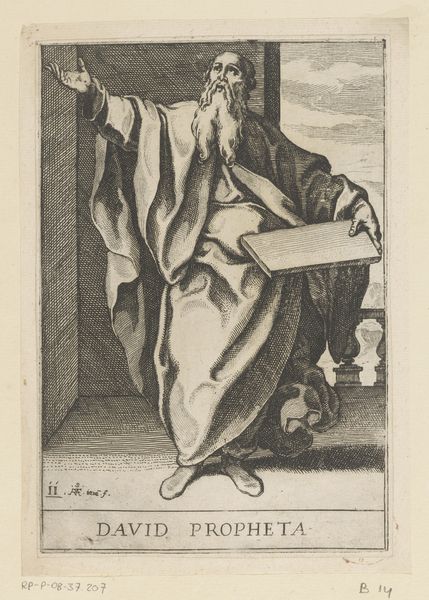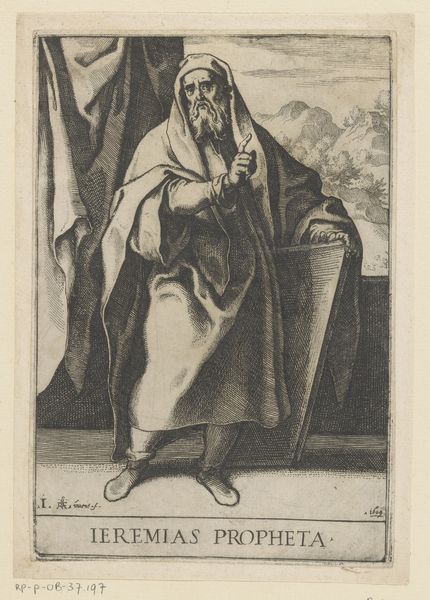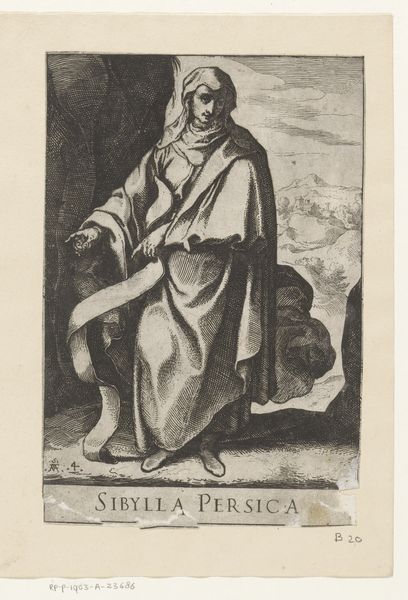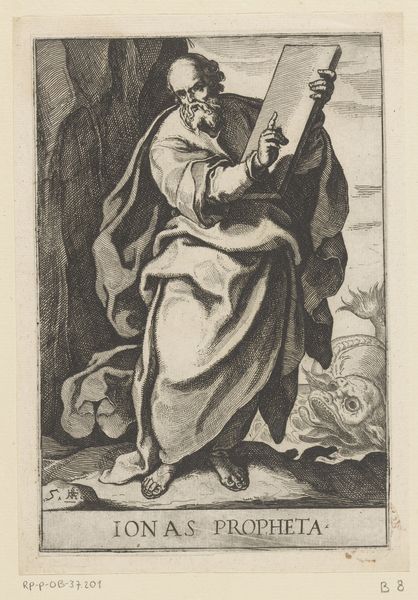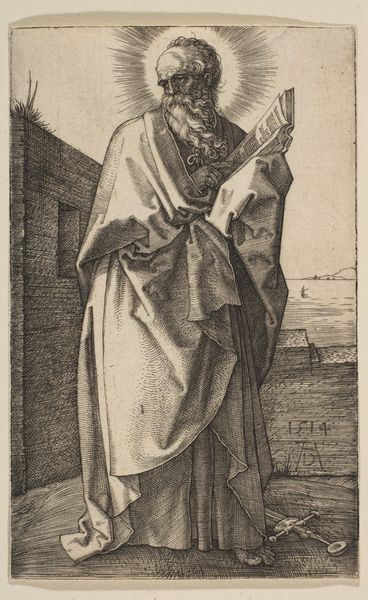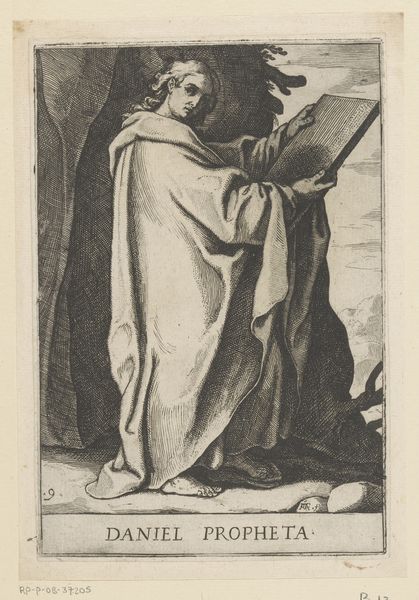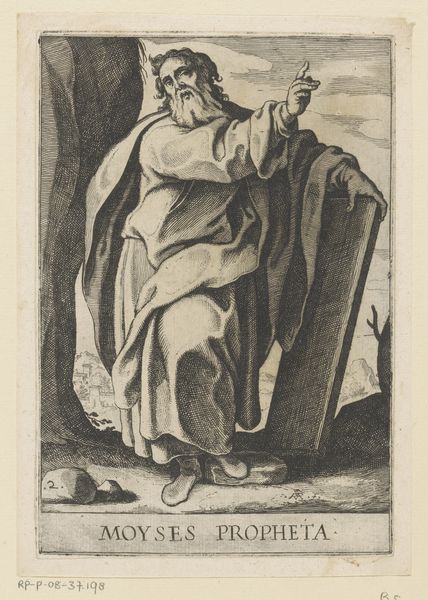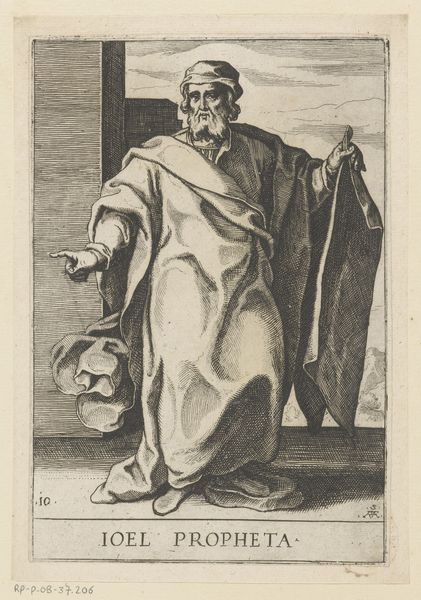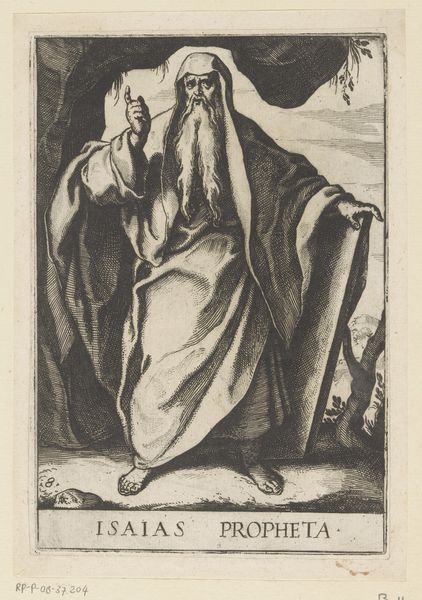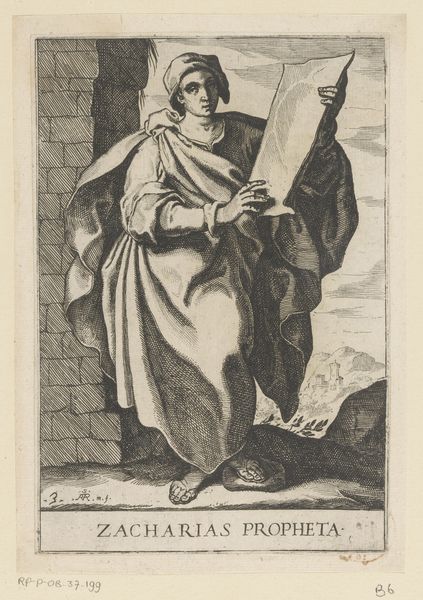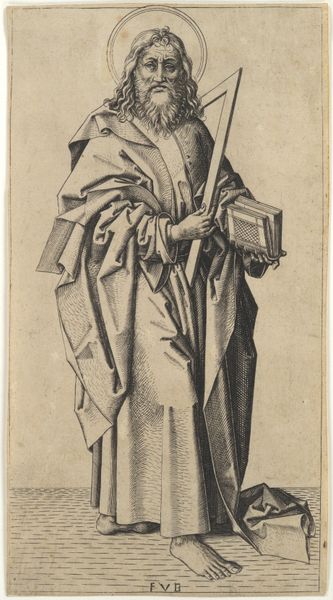
print, engraving
#
portrait
#
baroque
# print
#
old engraving style
#
figuration
#
line
#
history-painting
#
engraving
Dimensions: height 193 mm, width 132 mm
Copyright: Rijks Museum: Open Domain
Curator: This engraving, "Profeet Ezechiel," created sometime between 1606 and 1609, comes to us from the hand of Raffaello Schiaminossi. It resides here at the Rijksmuseum. What's your immediate read of it? Editor: It strikes me as somber, but also quite commanding. The sharp lines give a wonderful weight to Ezekiel's robes and beard, don't they? It is a full figured stance. The details create a real sense of gravitas and purpose, a formidable pronouncement of ancient wisdom. Curator: The technique of line engraving certainly amplifies that solemnity. It's fascinating how Schiaminossi uses solely line to create such depth and shadow. Prints like this circulated widely, weren't intended for grand spaces but for individual study, reflecting a democratizing influence in Baroque imagery. Editor: Democratizing… Perhaps. I imagine wealthy patrons acquiring the originals of drawings while this would trickle down. But there is such skill here! What about those tiny details, like the mountain range visible through the window. It gives a vastness to Ezekiel's purpose. He's set against this backdrop of natural law, if that makes sense? Curator: That does make sense! The mountainous background offers more than just perspective; it visually connects him to a landscape that mirrors the monumental quality of his pronouncements. In that light we can read it as almost hyper-realistic. Prints and engravings during this time served purposes, so one would want a clear, concise image with allegorical implications. Editor: Still, there’s a sort of… humility, I see in it. The prophet standing not on some marble plinth, but seemingly on just a few rough stone bricks with bits chipped off no less, in front of us in very low cut toga sandals showing off his very mortal toes! What’s that about? Curator: The bricks do humanize him. Though rendered with incredible skill, it also hints to a figure not entirely removed from the quotidian reality of the everyday. This way it emphasizes a shared humanity, in the context of religious leadership and Baroque sensibilities, quite radical actually. Editor: You are right about that detail and humanity it is imbued with. A fresh look and outlook from past artists to modern interpretations that are reinterpreted over the generations! A small piece to have such weight in thought! Curator: Precisely! And through his rendering and attention to historical details of that specific era, an opening is brought forth to an engaging experience.
Comments
No comments
Be the first to comment and join the conversation on the ultimate creative platform.
